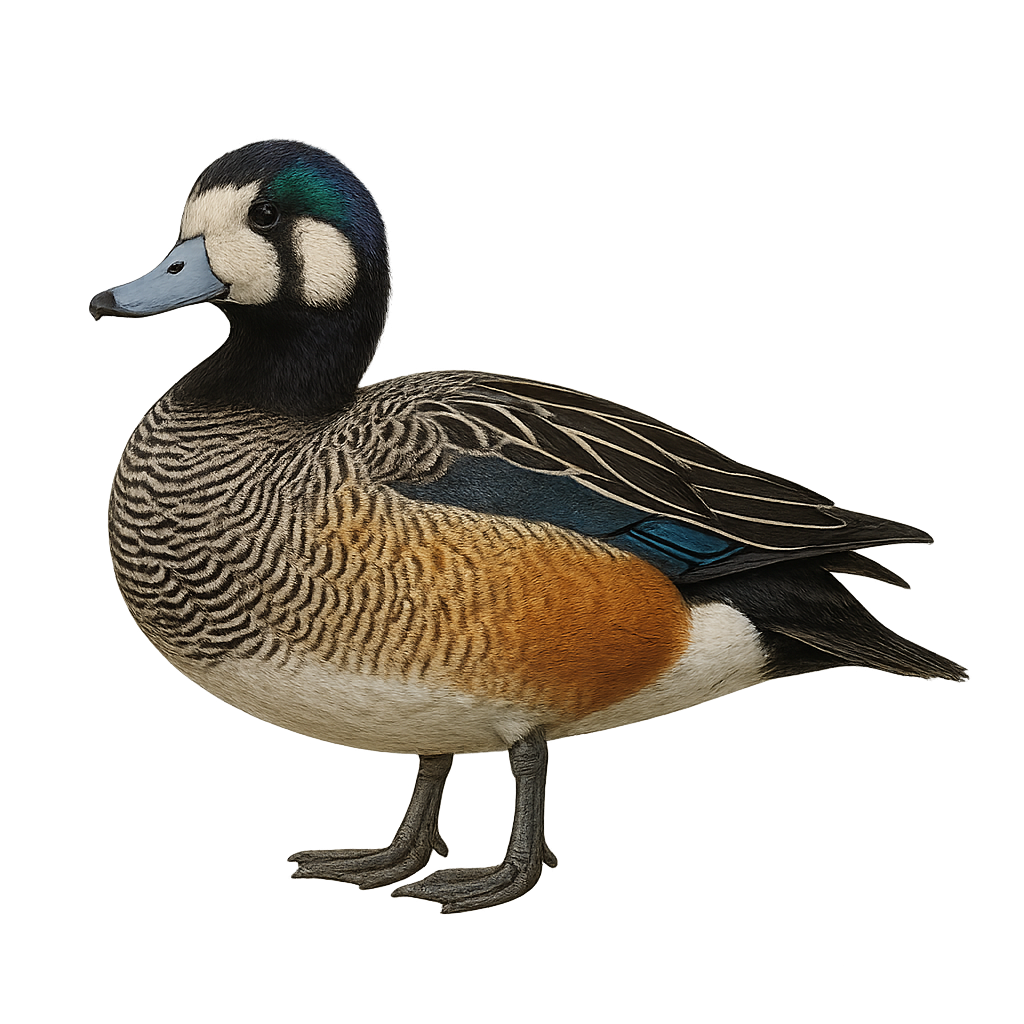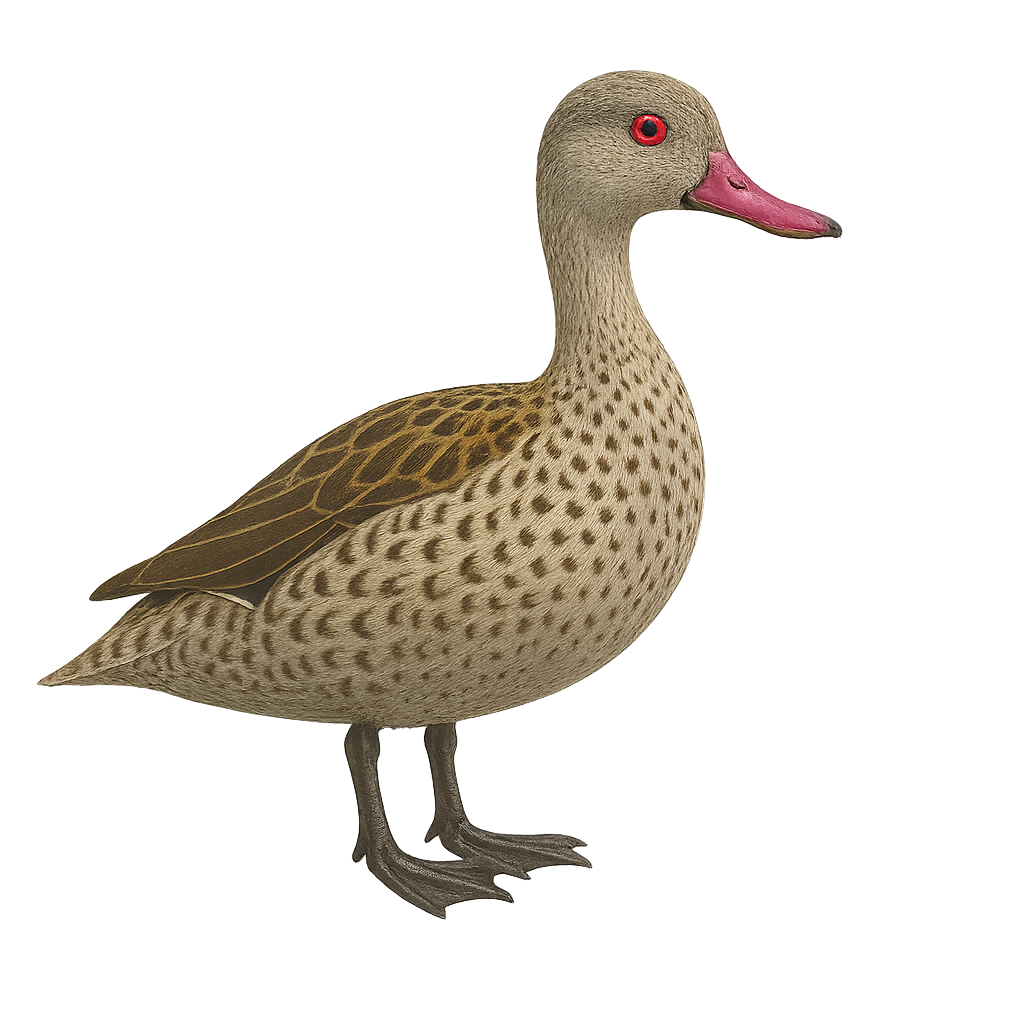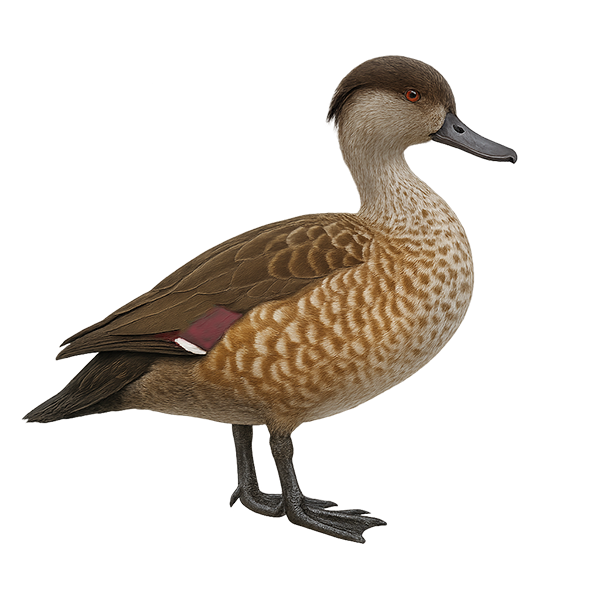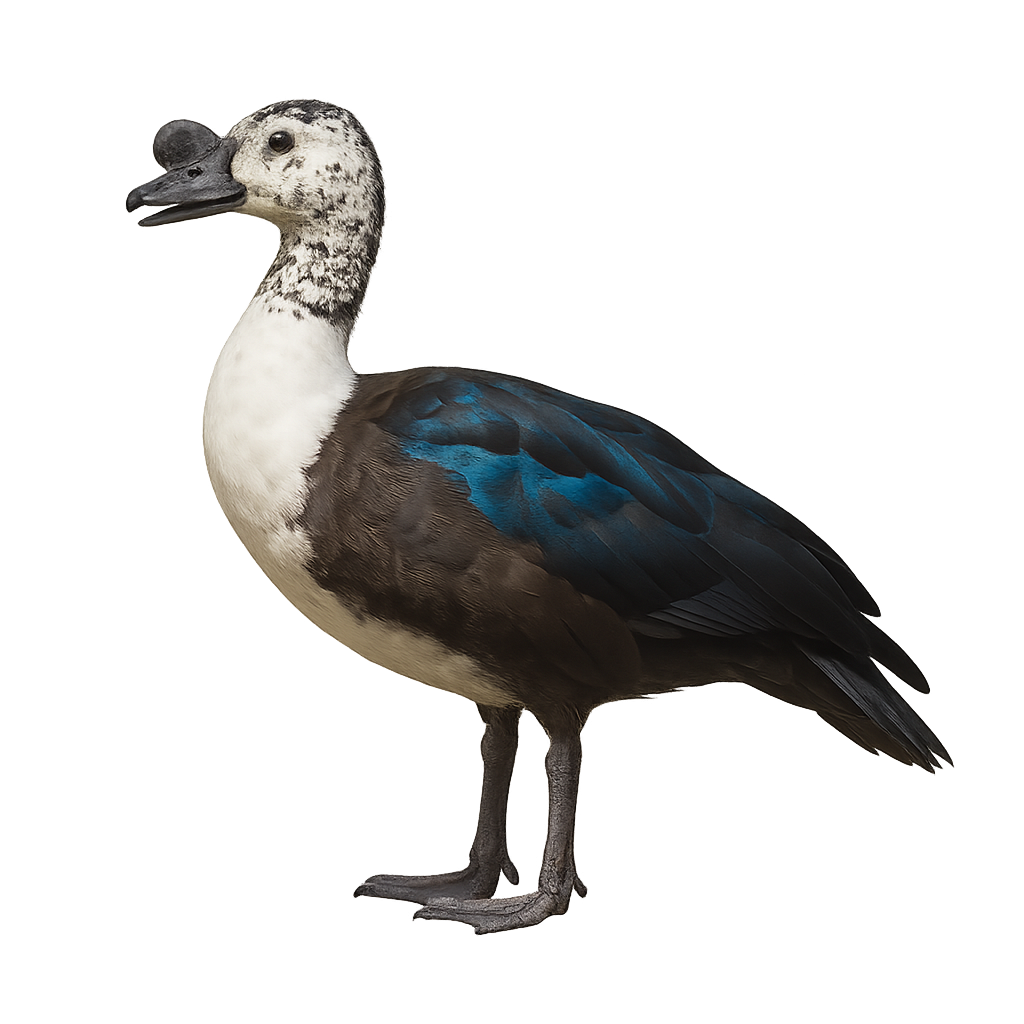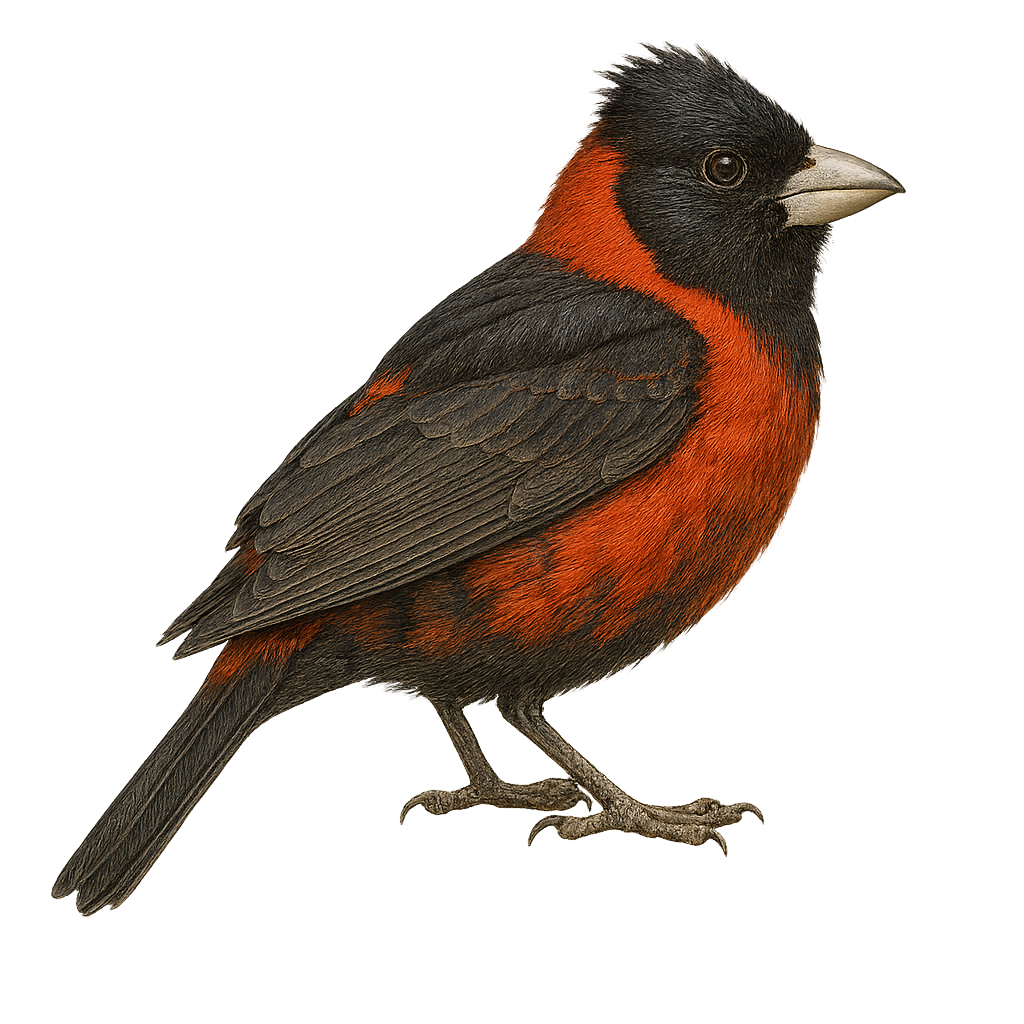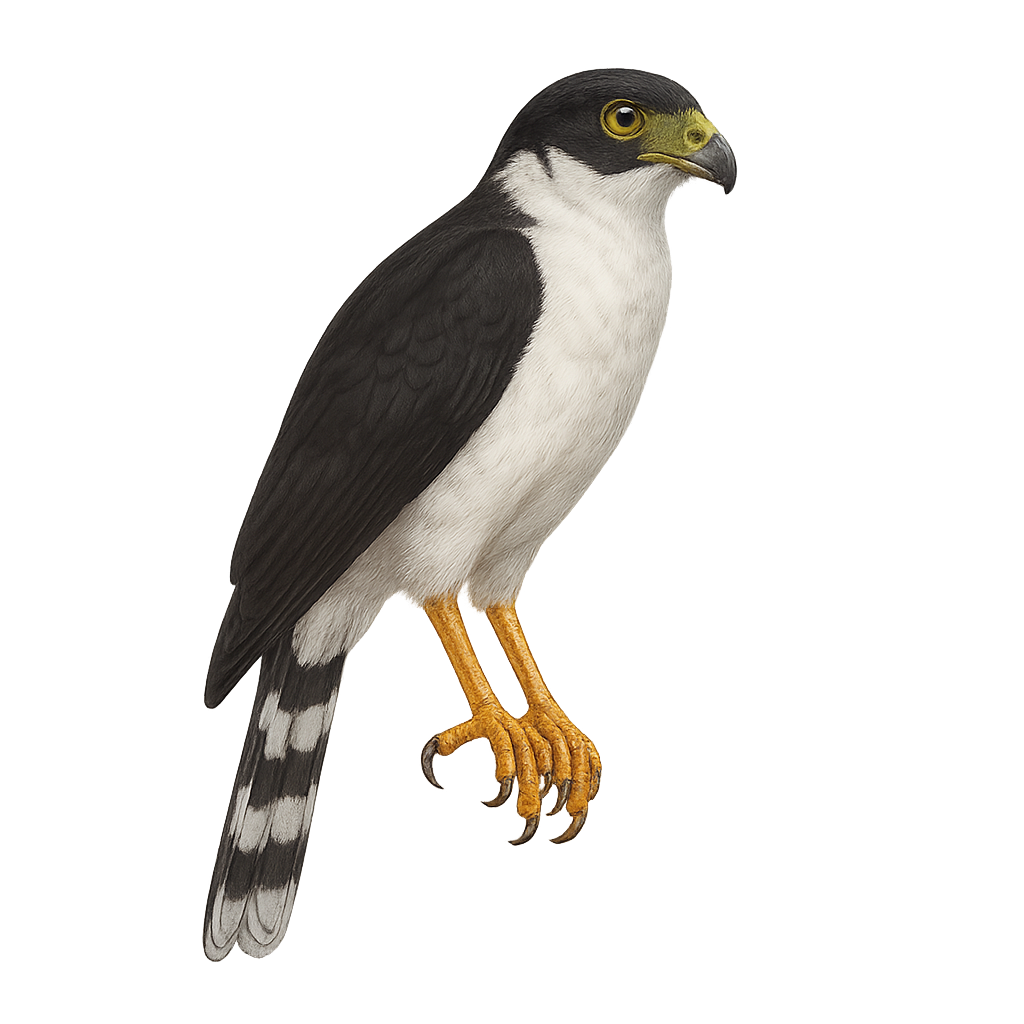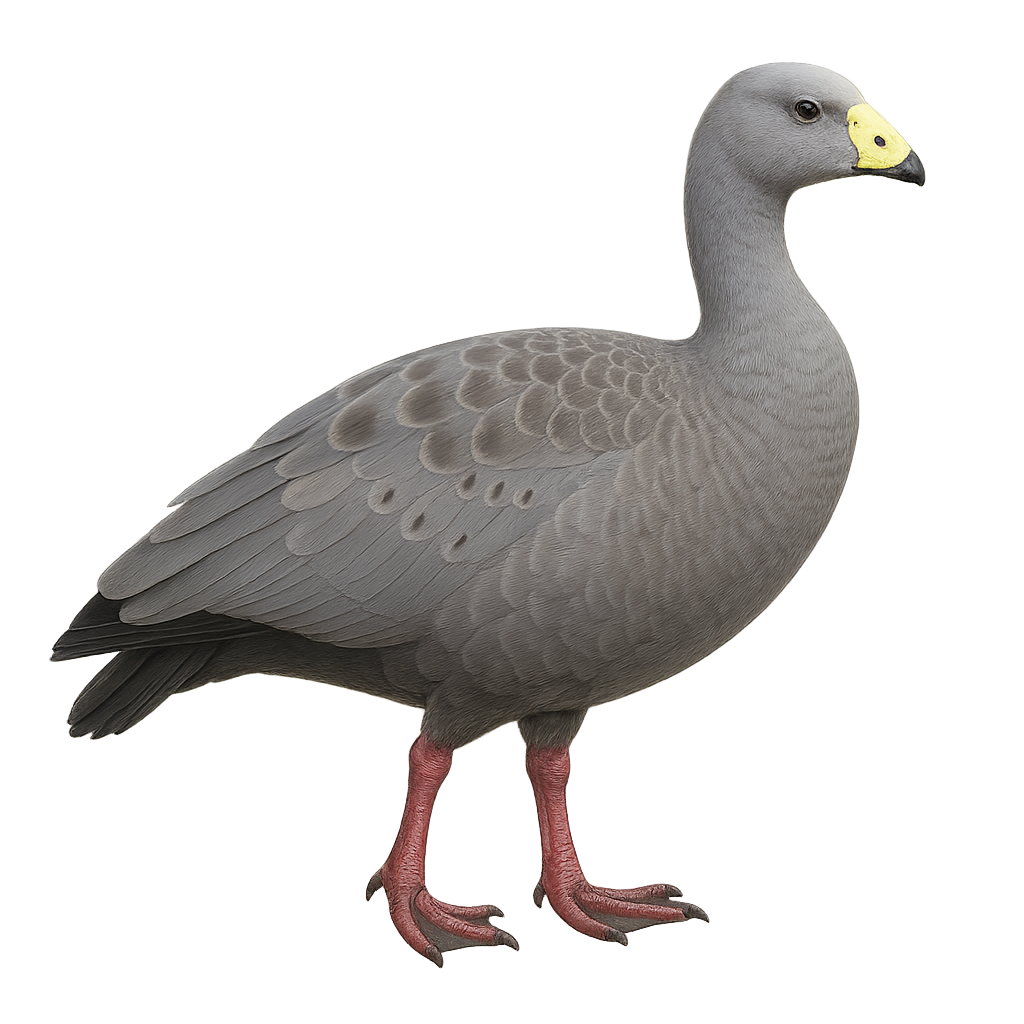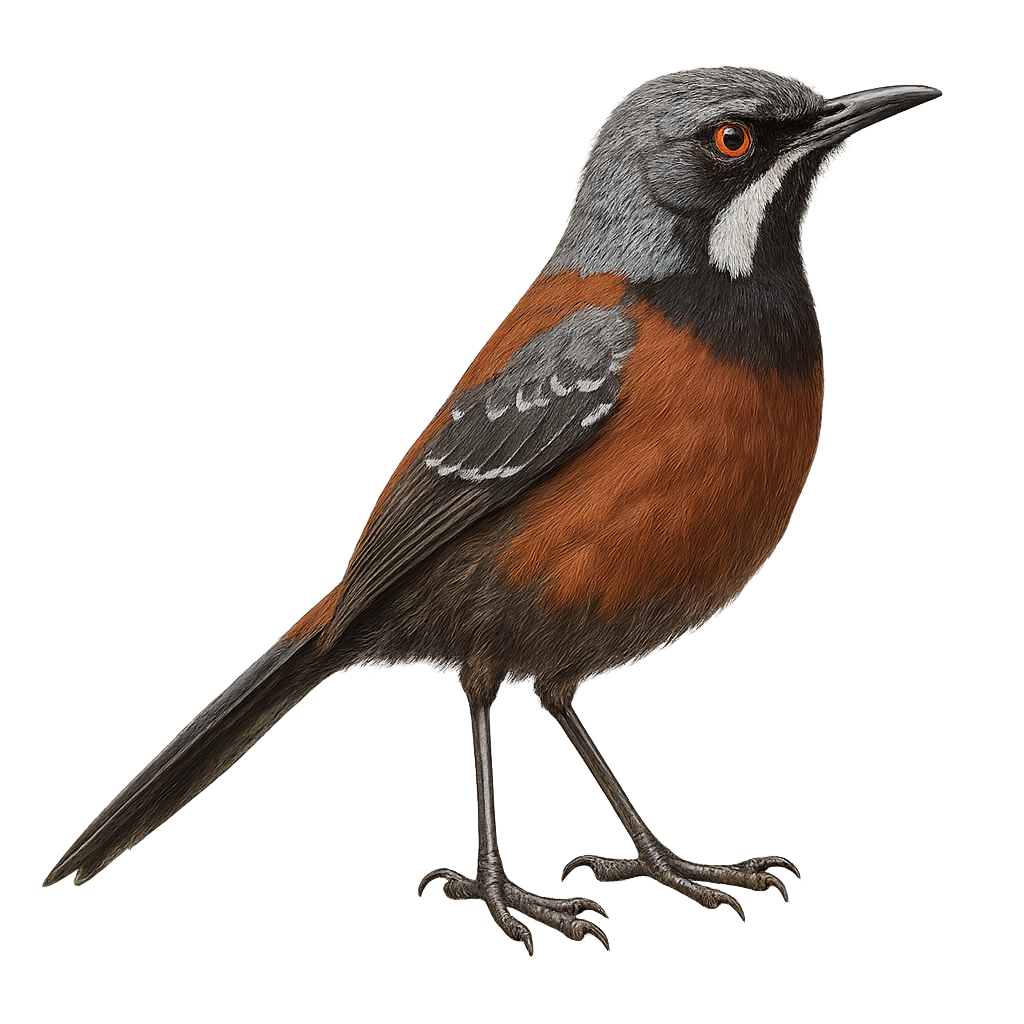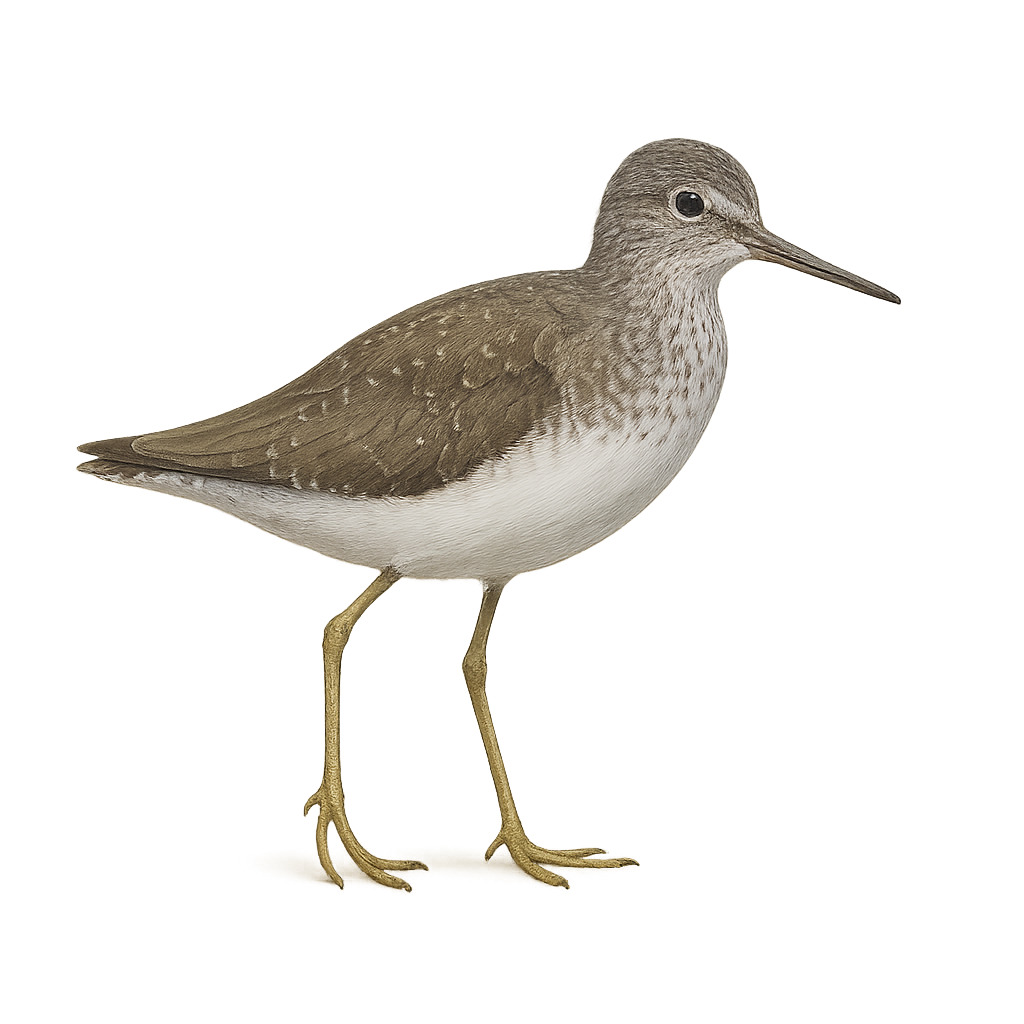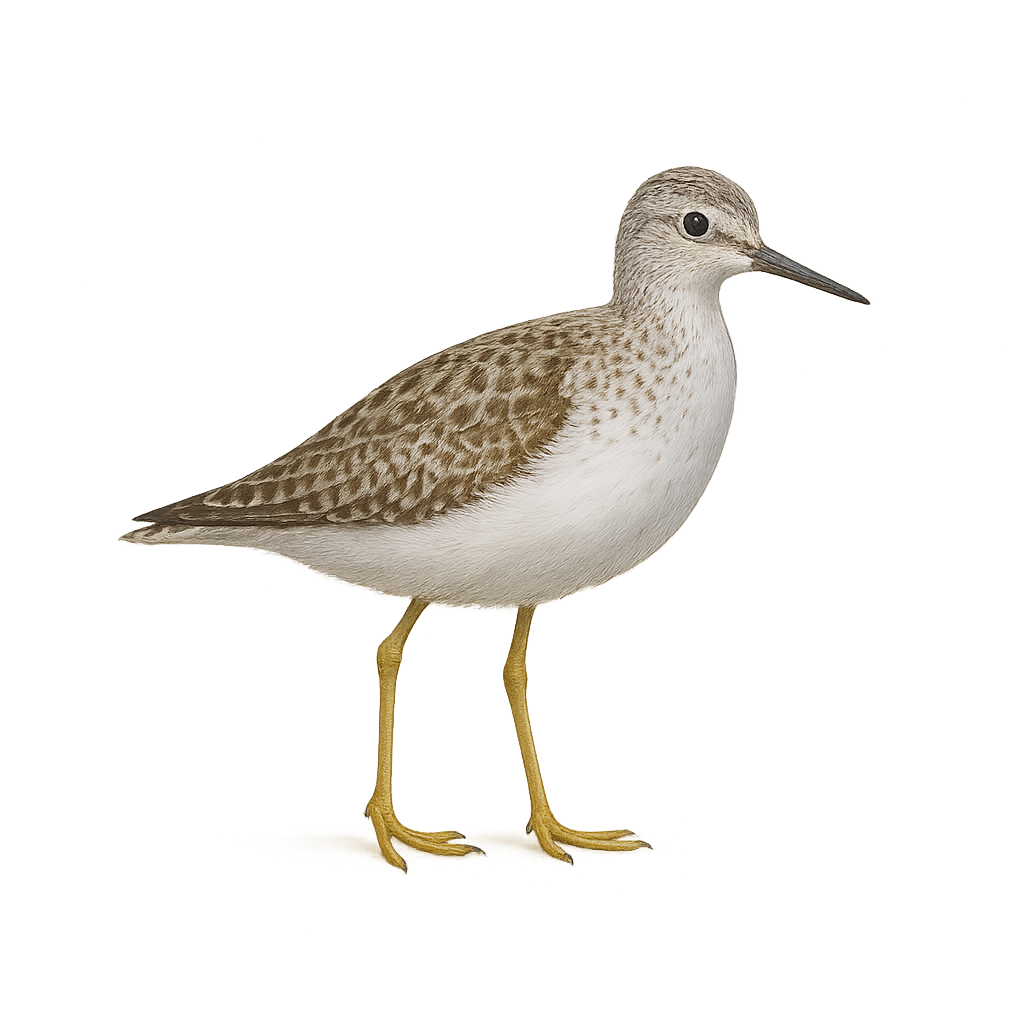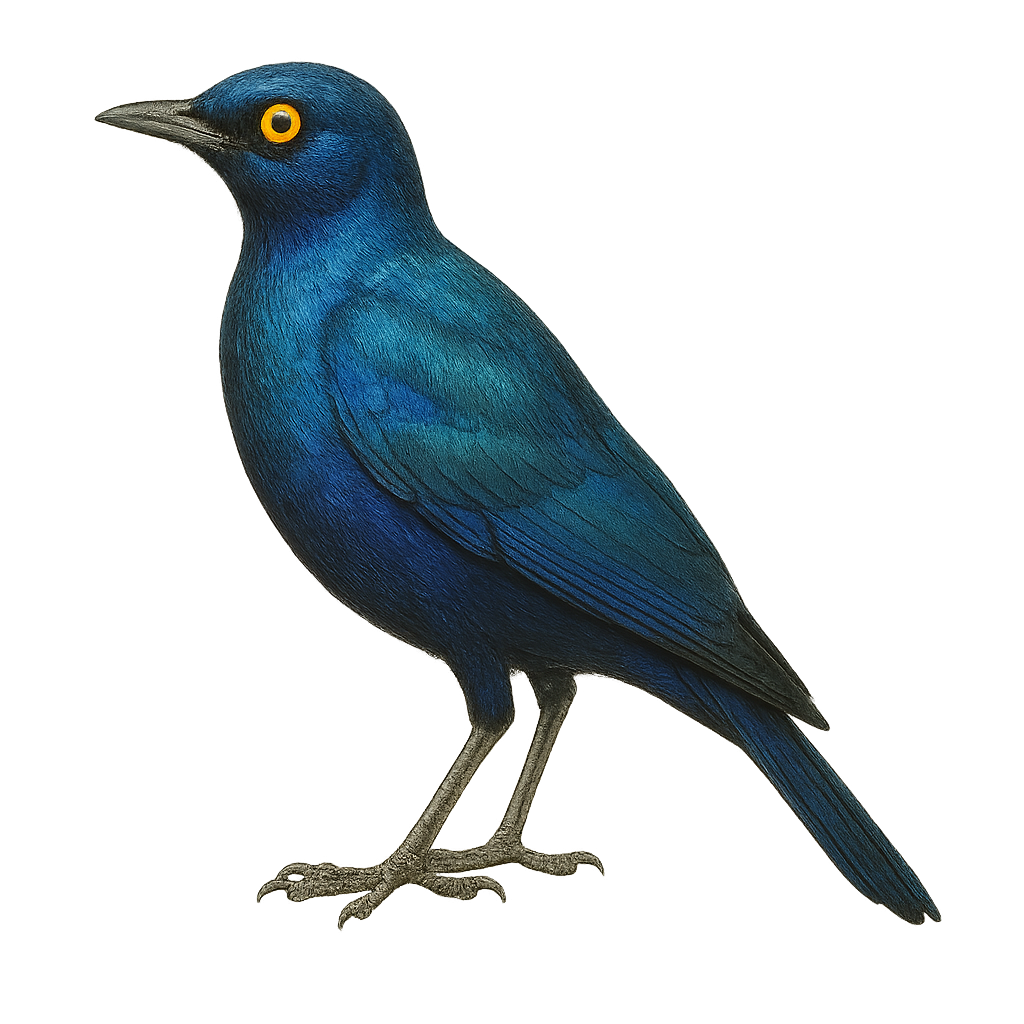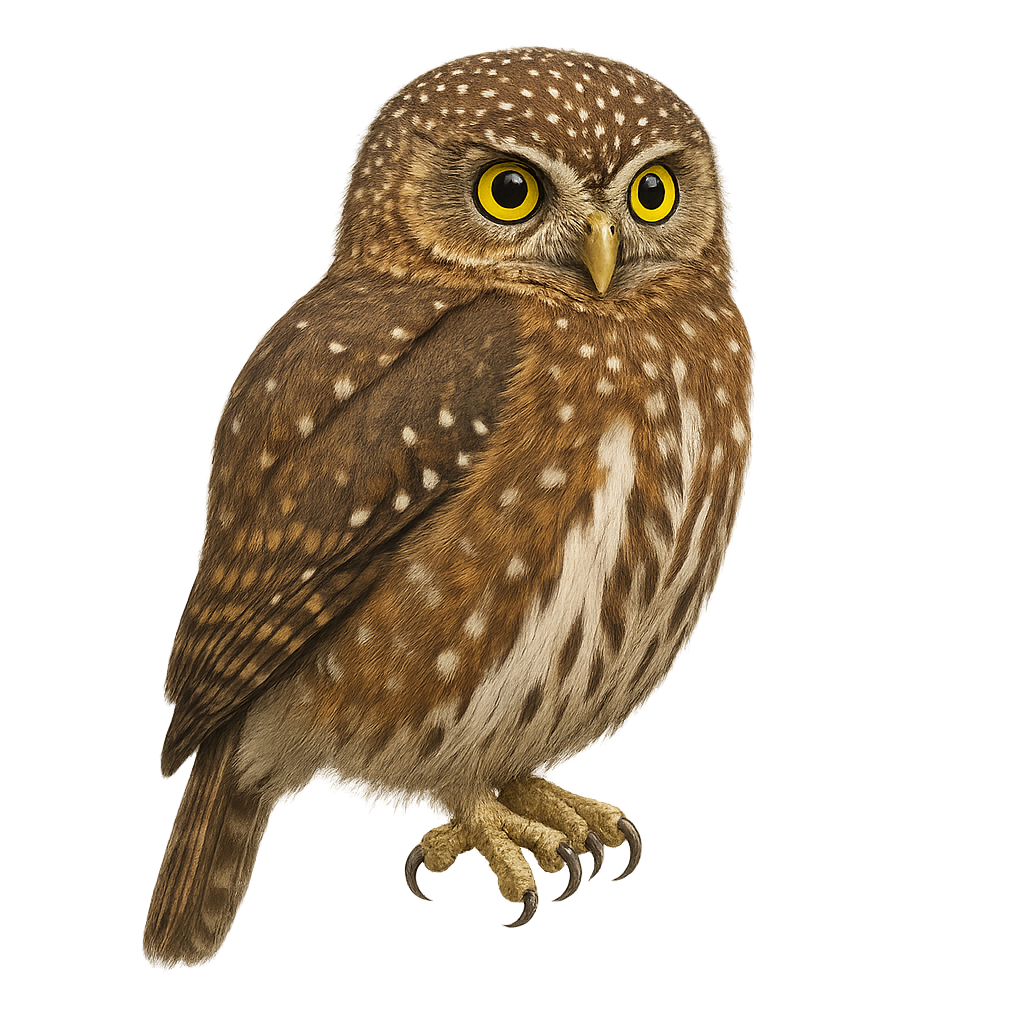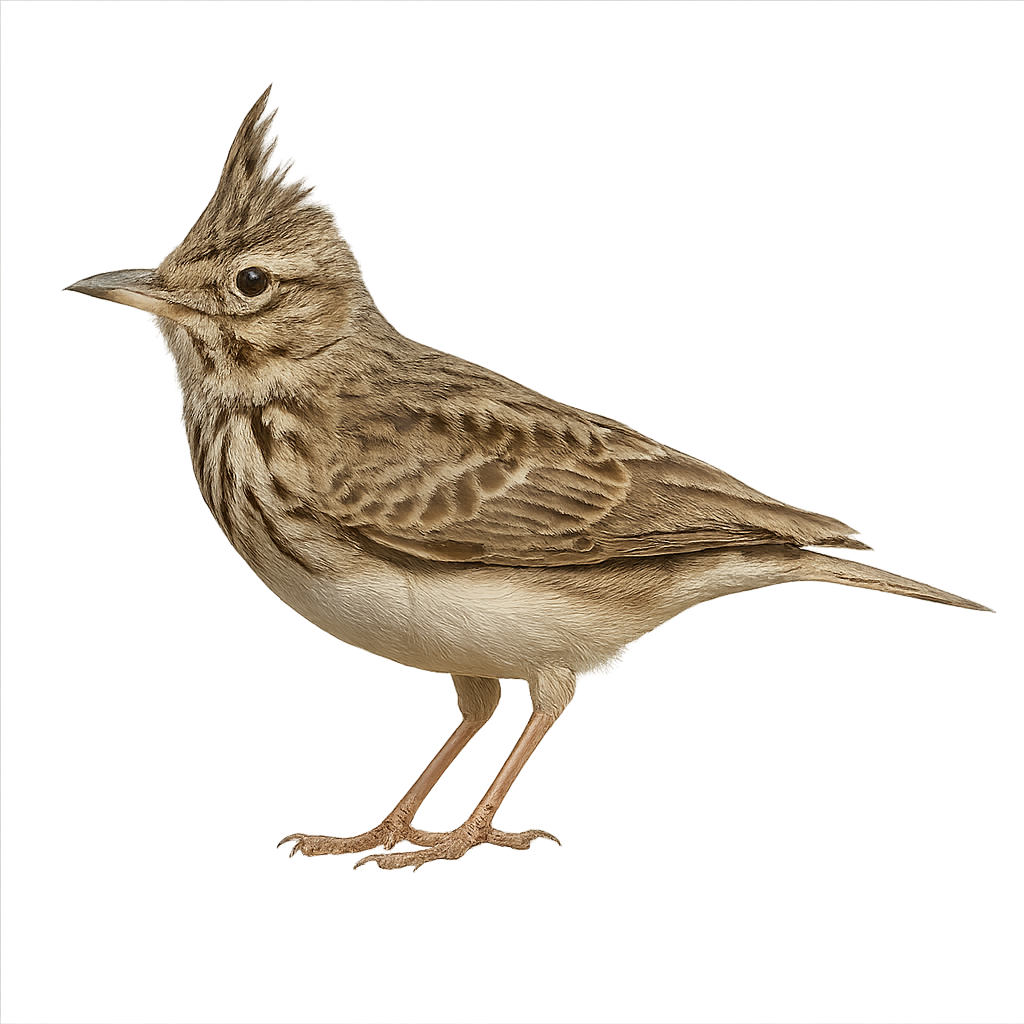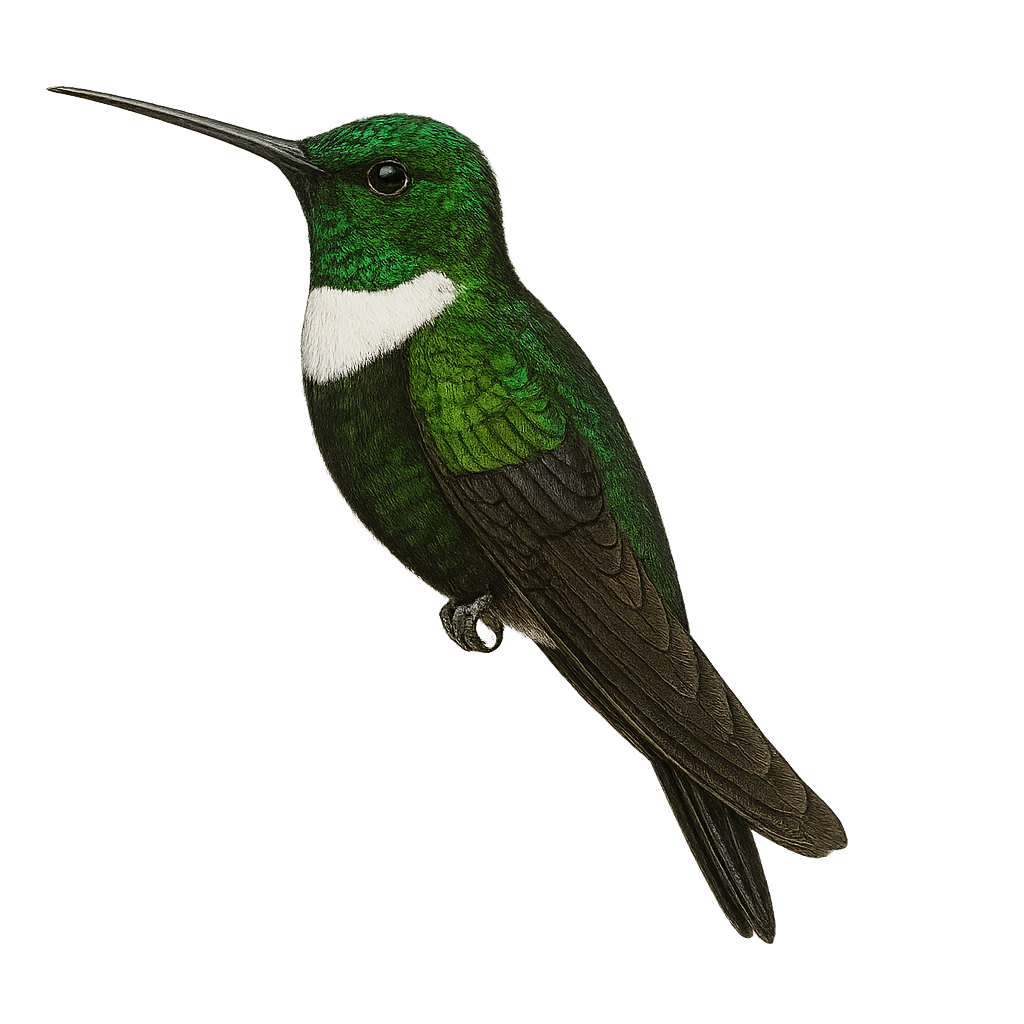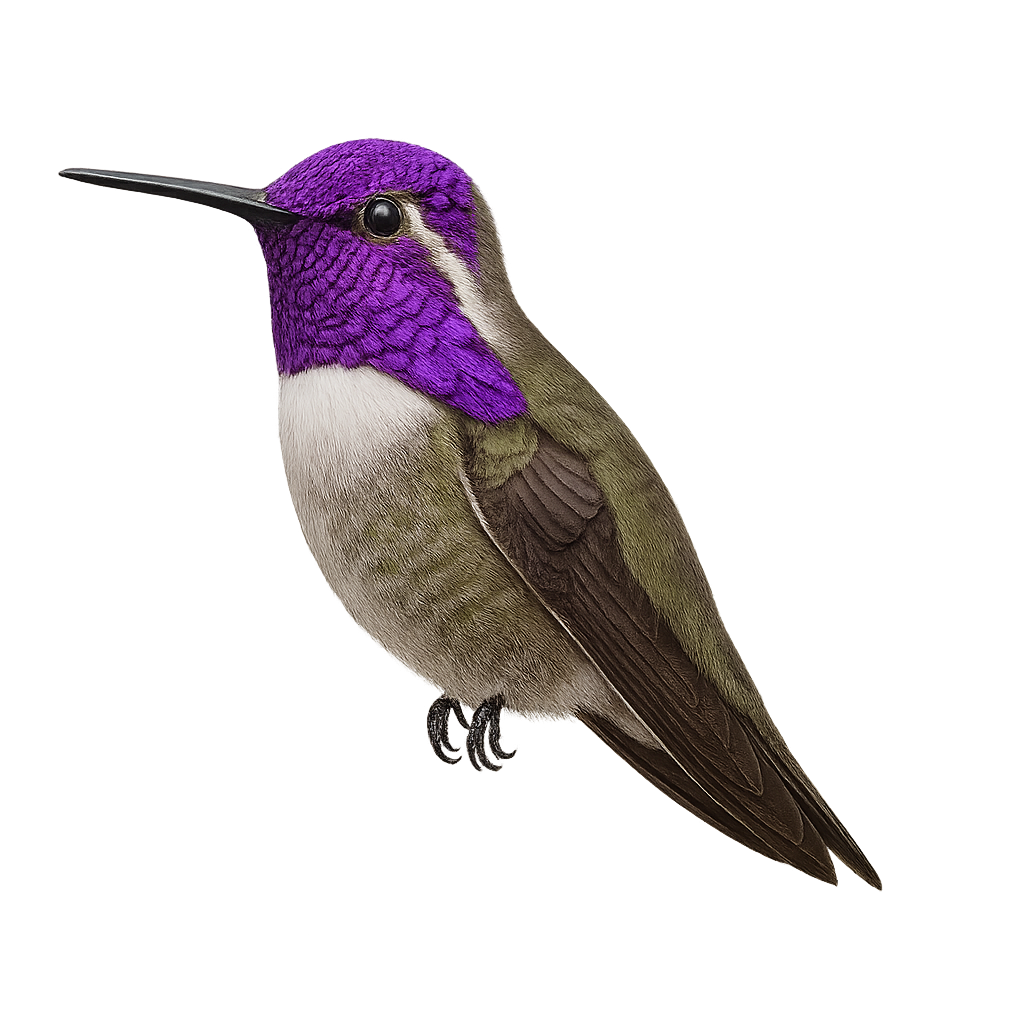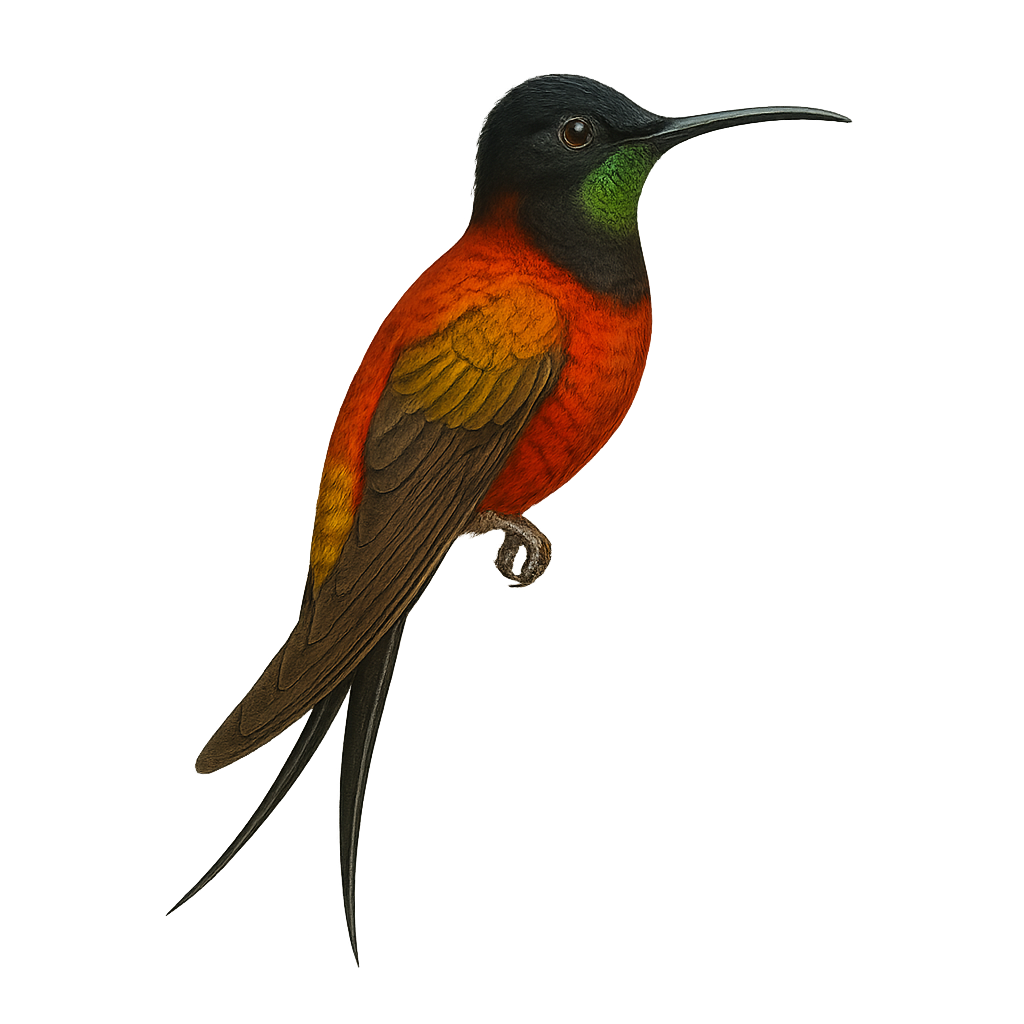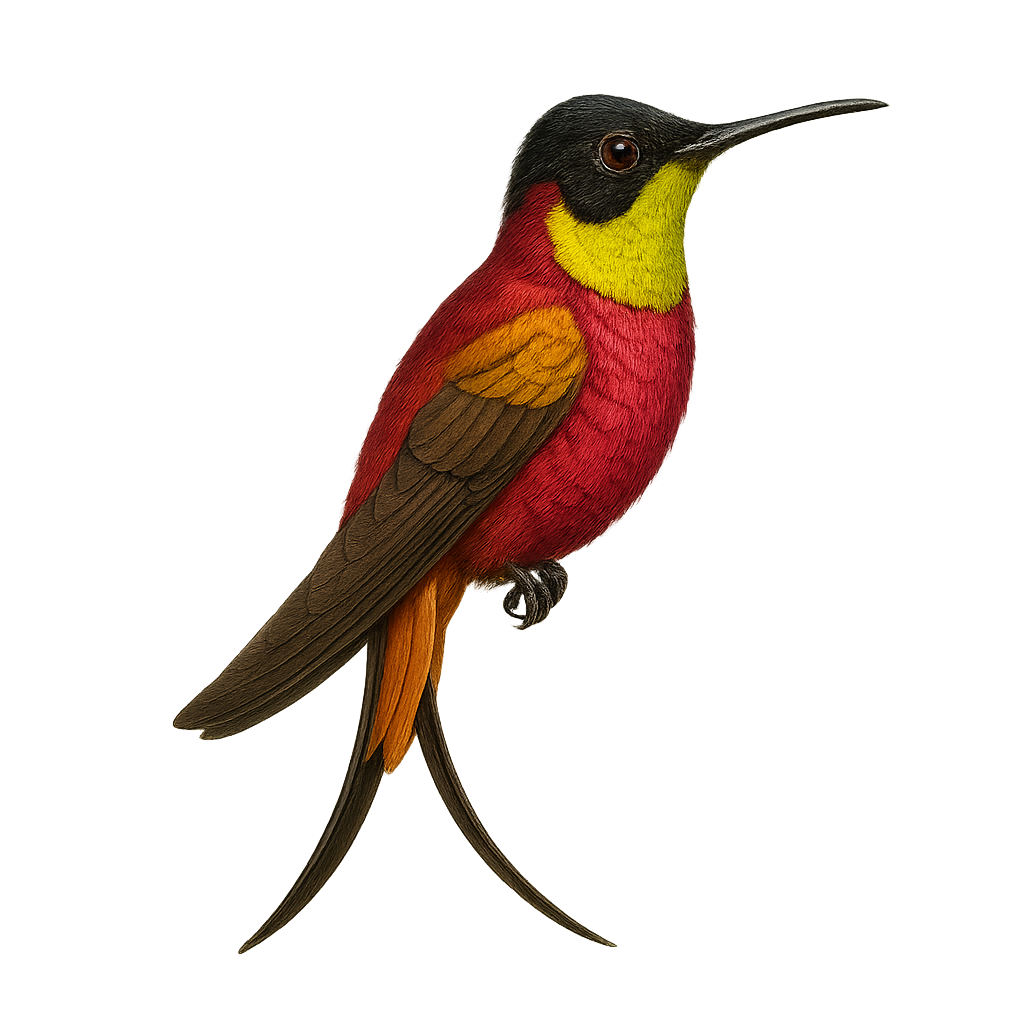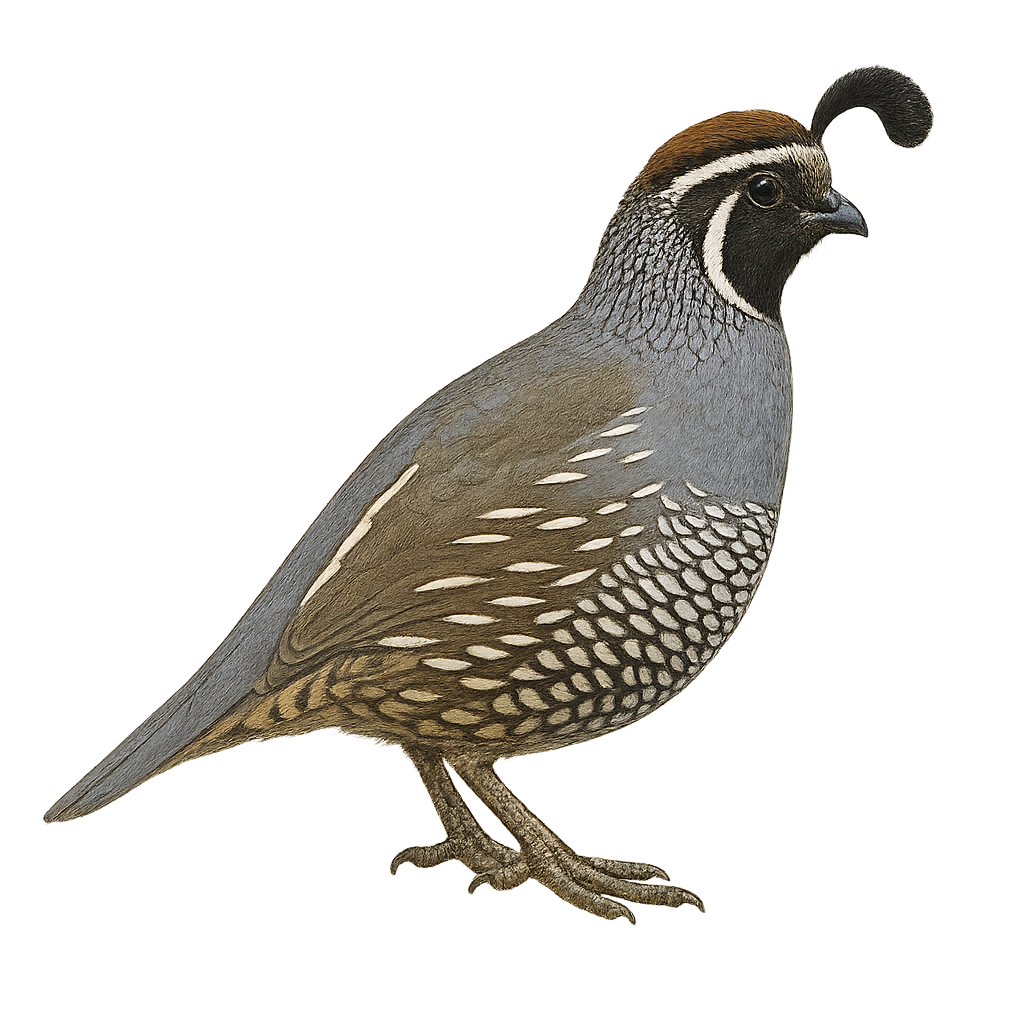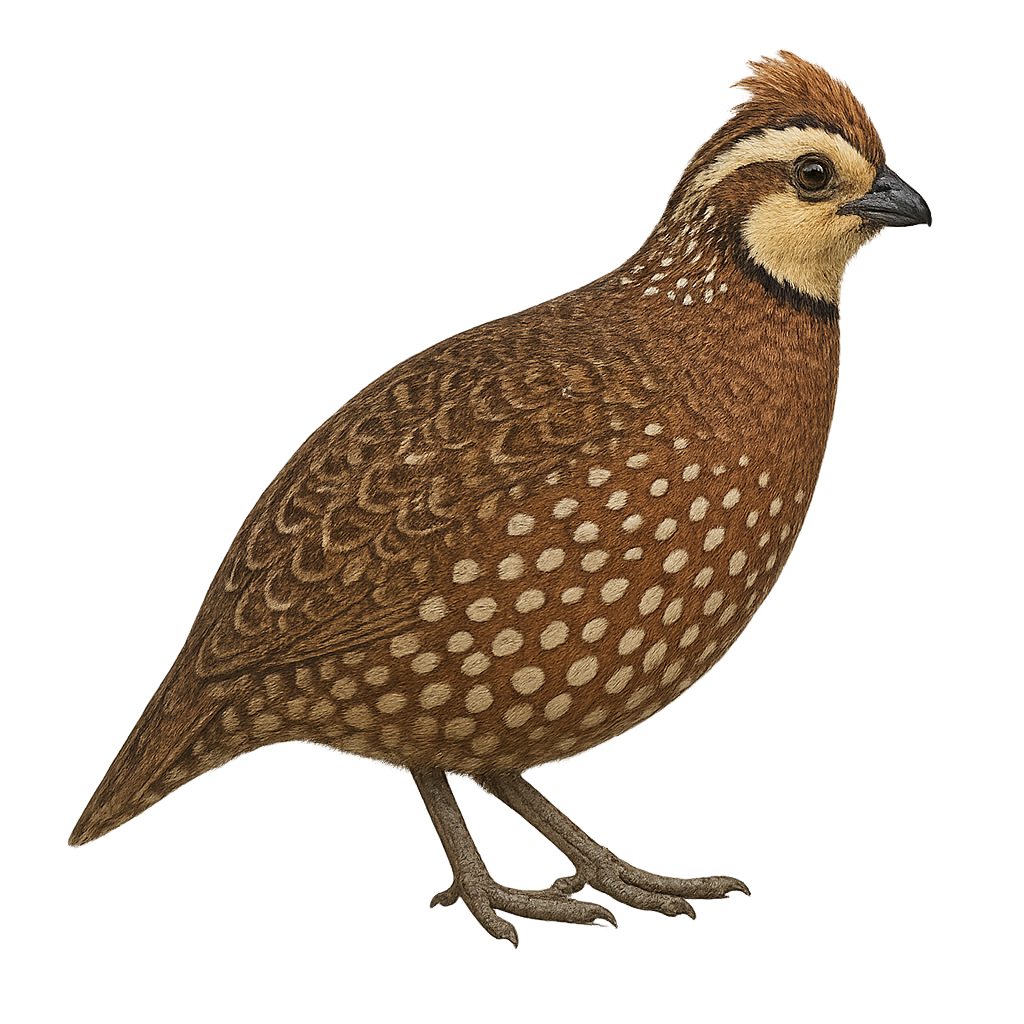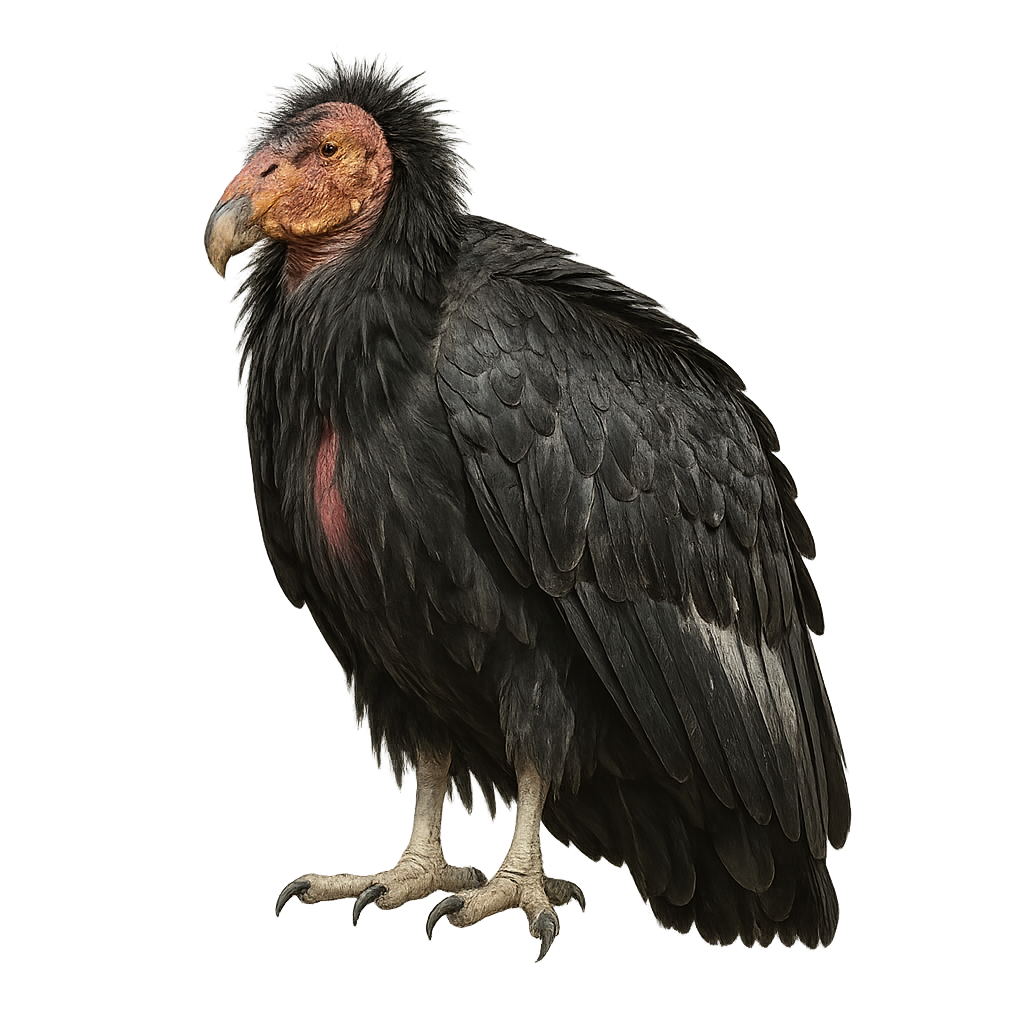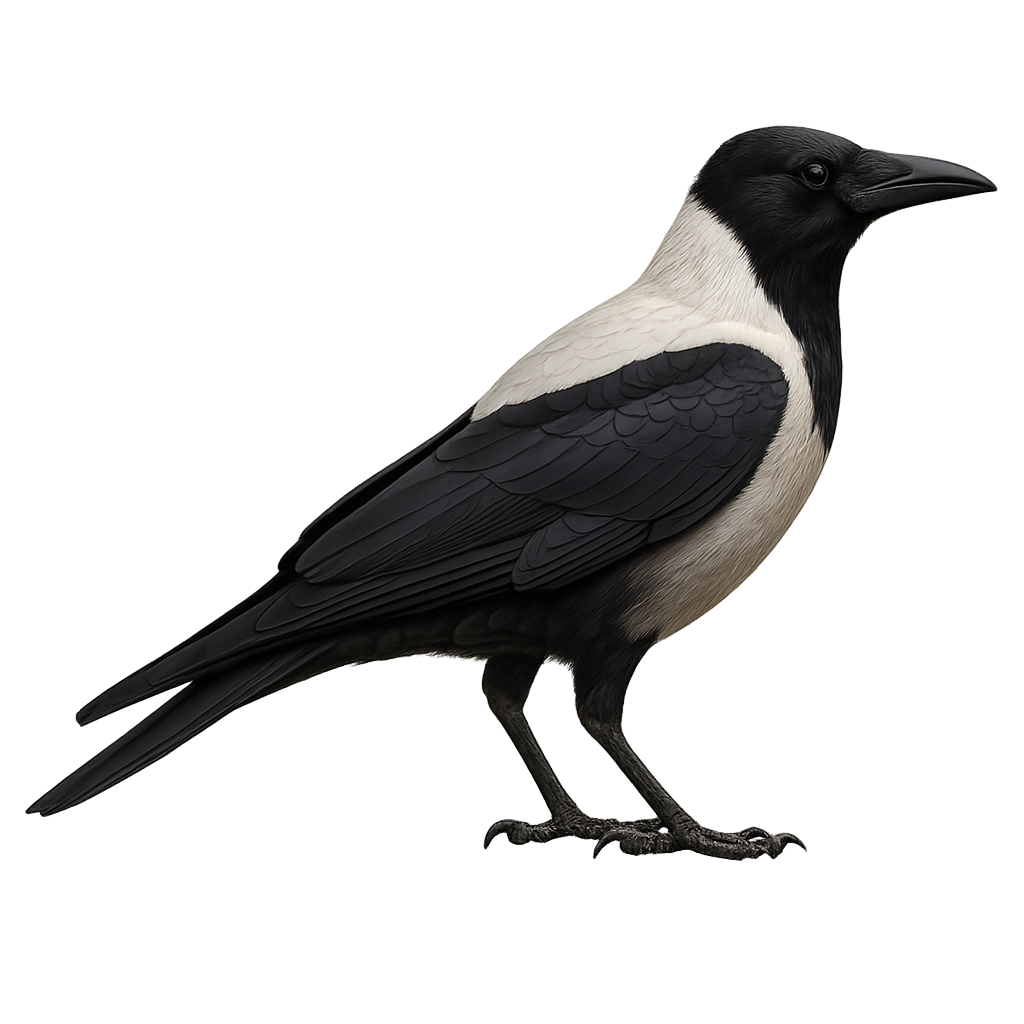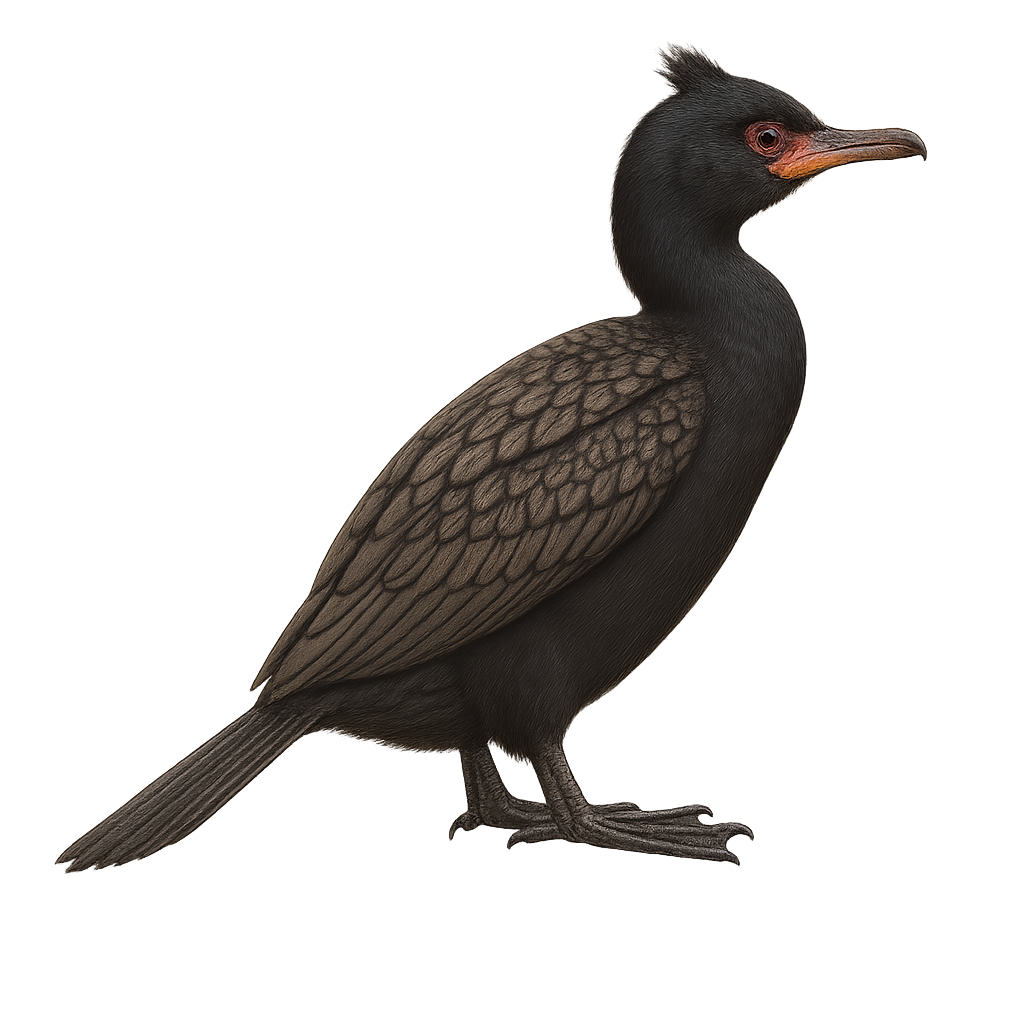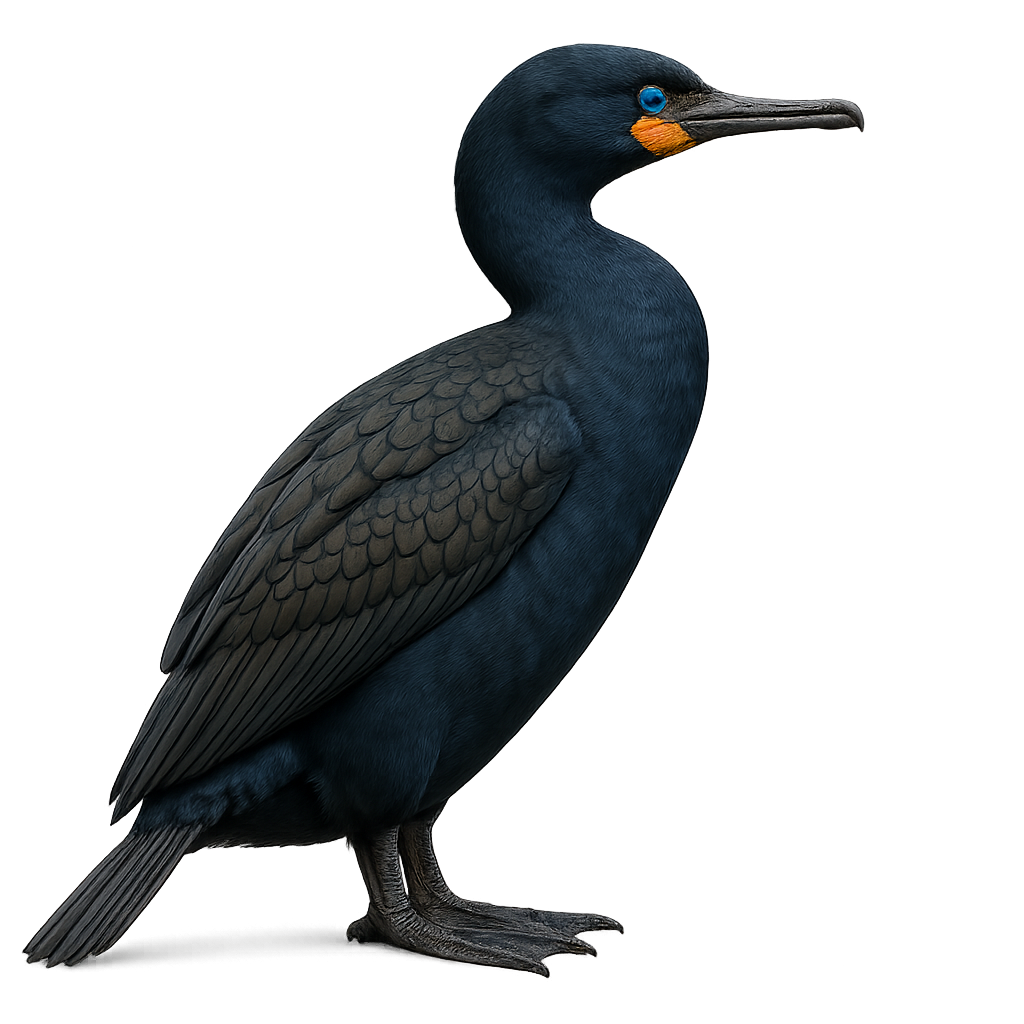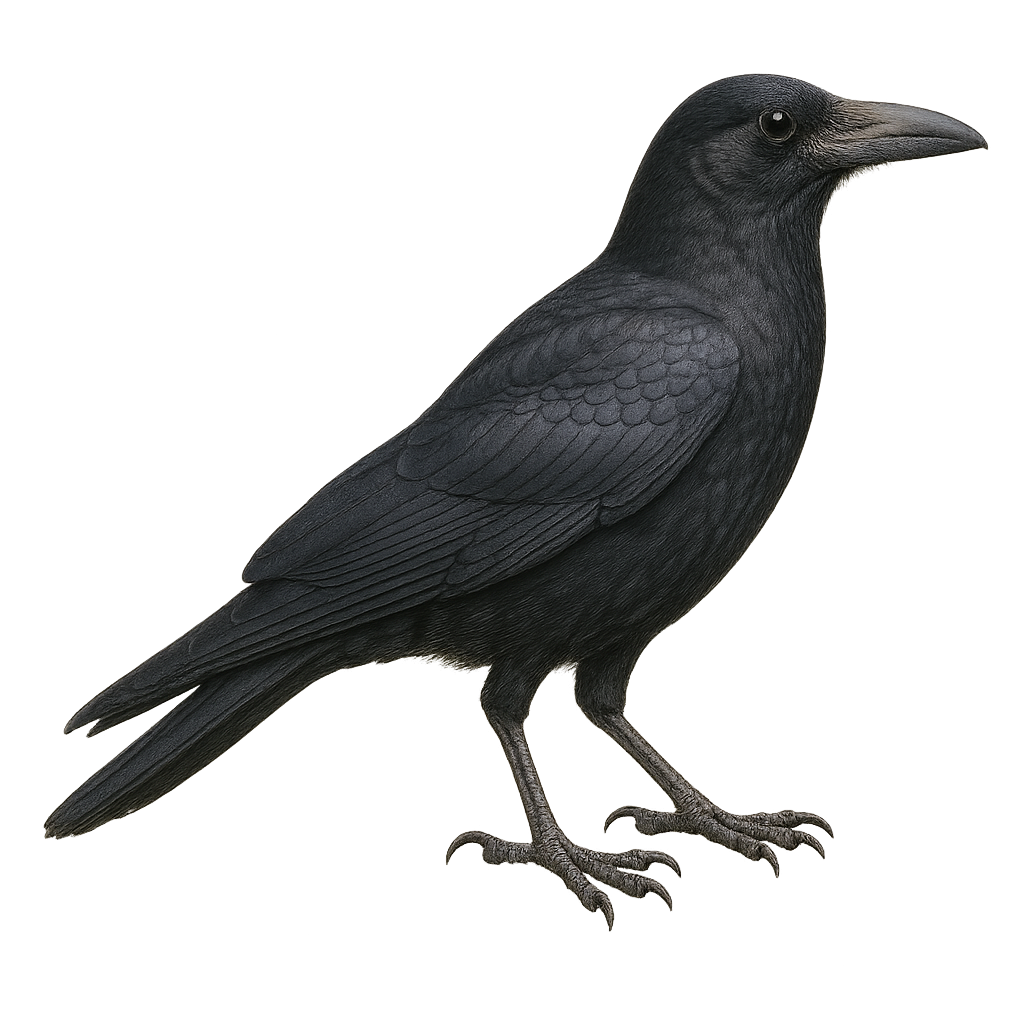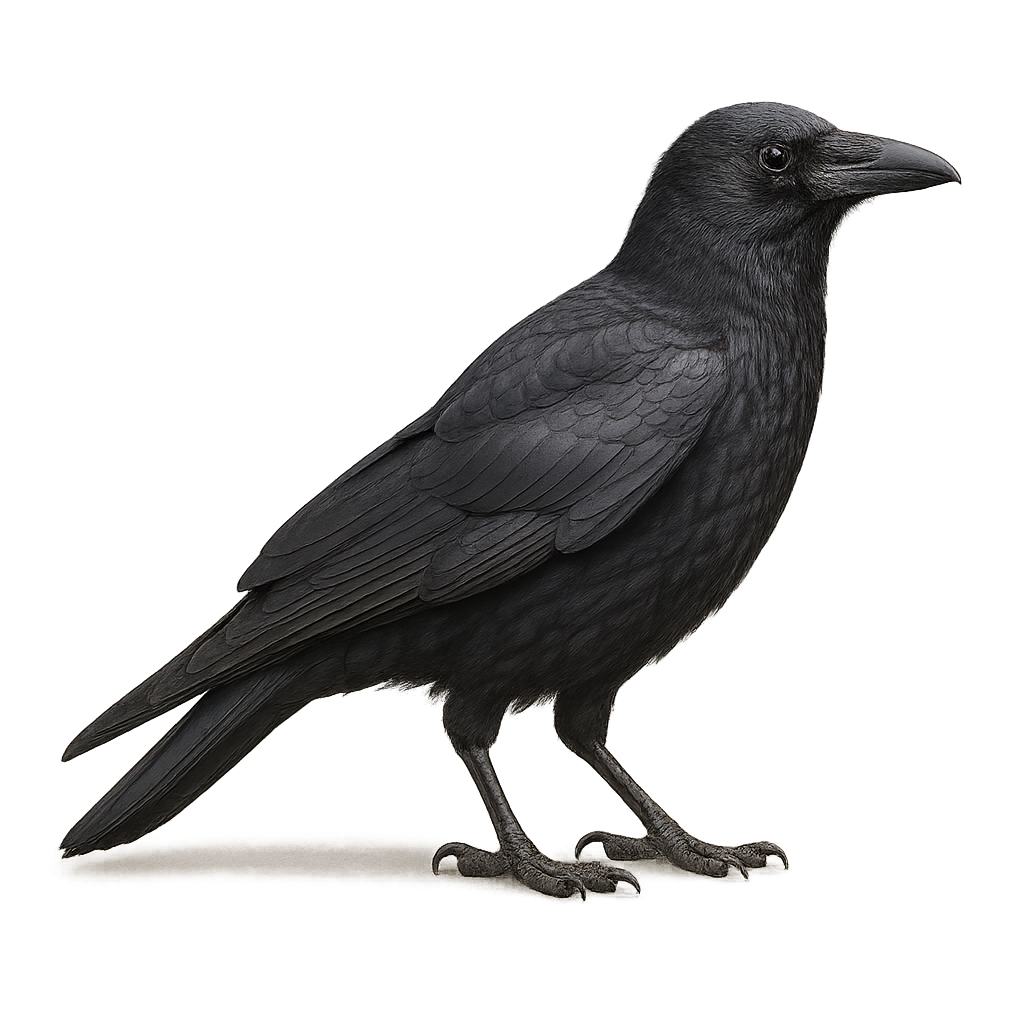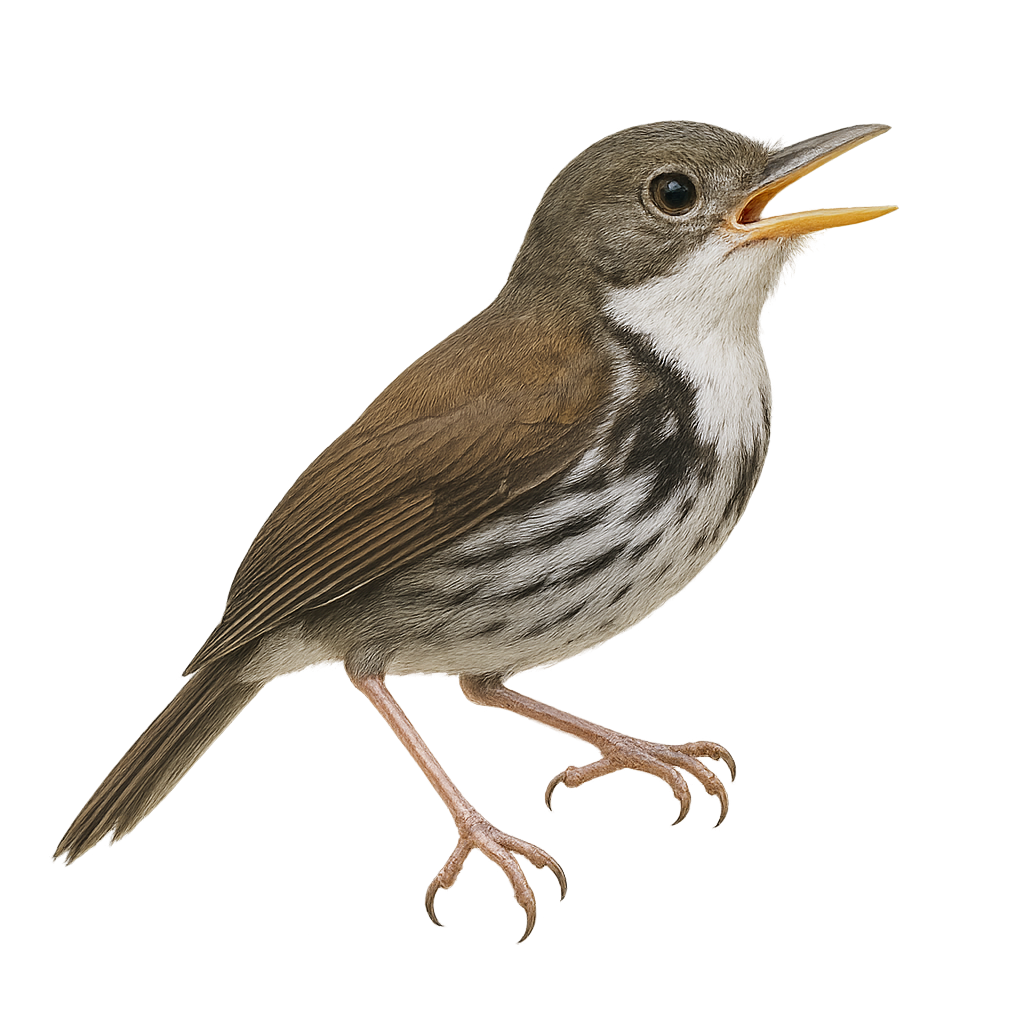The Chiloe Wigeon, or Anas sibilatrix, is a medium-sized waterfowl known for its distinctive plumage. It features a white head with metallic green bands, a brown back, and a white belly. Its bill is blue-gray with a black tip. Native to South America, it primarily inhabits wetlands, lakes, and rivers. This duck is often seen in small groups and feeds mainly on aquatic plants, insects, and small crustaceans. Although generally not very shy, it can be cautious in the presence of threats. Its breeding season typically extends from spring to summer, and it builds its nest near water, often hidden in dense vegetation.
The Cape Teal, Anas capensis, is a small dabbling duck native to sub-Saharan Africa. It is easily identifiable by its bright red bill and pale grey plumage speckled with dark spots. Males and females are similar, though females are slightly smaller. This duck prefers aquatic habitats such as lakes, marshes, and slow-moving rivers. It primarily feeds on aquatic plants, seeds, and insects. Although generally discreet, it can form large flocks outside the breeding season. Its population is stable, but it is sometimes threatened by habitat loss and water pollution.
The Crested Duck, or Lophonetta specularioides, is a medium-sized Andean duck, recognizable by its subtle crest and brown-gray plumage with iridescent wing highlights. It inhabits high-altitude lakes, marshes, and slow rivers, mainly in the Andes and Patagonia. Well adapted to cold, windy environments, it is omnivorous, feeding on aquatic vegetation, invertebrates, and occasionally small fish. This duck is gregarious yet discreet, often seen in small groups. Its population is considered stable overall.
The Sarkidiornis sylvicola, commonly known as the Comb Duck, is a distinctive waterfowl known for its unique appearance. This large duck features predominantly white plumage with iridescent sheens on its wings and back. Males are notable for a prominent knob on their bill, which becomes more pronounced during the breeding season. Females are smaller and have duller plumage. This duck primarily inhabits wetlands, lakes, and rivers in the tropical and subtropical regions of South America. It is often seen in small groups, feeding on aquatic plants, seeds, and insects. Although currently listed as "Least Concern," habitat degradation could pose a future threat.
The Crimson-collared Grosbeak, Periporphyrus celaeno, is a striking bird with vivid red plumage, primarily red with black wings and tail, and a contrasting black head. It is endemic to the humid tropical forests of northeastern Mexico, where it inhabits dense undergrowth and forest edges. This bird is often seen alone or in small groups, feeding on fruits, seeds, and insects. The Crimson-collared Grosbeak is known for its melodious and varied song, which echoes through the canopy. Although it is relatively common within its restricted range, deforestation poses a potential threat to its natural habitats.
The Collared Forest Falcon, or Micrastur semitorquatus, is a medium-sized raptor primarily found in the dense tropical forests of Central and South America. It is distinguished by its dark plumage, often black or dark gray, with a distinctive white collar around its neck. This agile and discreet predator feeds mainly on small mammals, birds, and reptiles. Known for its ability to hunt in cluttered forest environments, it uses silent flight and great agility. Although not extensively studied, it plays a crucial role in the ecological balance of its natural habitat.
The Cape Barren Goose, or Cereopsis novaehollandiae, is a bird species endemic to Australia. It is characterized by its ash-grey plumage and short black bill surrounded by a bright yellow cere. This bird, measuring about 75 to 100 cm in length, is often seen in small groups on coastal islands and wetlands in southern Australia. Although primarily herbivorous, feeding on grasses and aquatic plants, it may occasionally consume insects. The Cape Barren Goose is known for its ability to travel long distances in search of food, although it is generally sedentary.
The Cape Rockjumper, or Chaetops frenatus, is a bird endemic to the mountainous regions of southern Africa, primarily in South Africa. It is recognizable by its distinctive rufous tail and brown-grey plumage. This bird prefers rocky and mountainous habitats where it can move nimbly in search of food. It primarily feeds on insects and small invertebrates, which it captures by foraging on the ground or catching in flight. The Cape Rockjumper is a social bird, often observed in small family groups. Its ability to adapt to harsh environments makes it a fascinating example of South African biodiversity.
The Green Sandpiper is a medium-sized wader, easily recognizable by its green-brown plumage with mottled patterns and its white tail, which gives it its name. During the breeding season, males display more colorful plumage, with iridescent green tones and white markings on the wings and tail. Outside of the breeding season, both sexes adopt a more uniform plumage, often olive-brown with shades of white and gray.
The Green Sandpiper is primarily found in wetlands, marshes, estuaries, and lake shores, where it feeds on small aquatic invertebrates, insects, and crustaceans that it uncovers while probing in the mud. While this species is migratory, it does not travel as long distances as some other waders, primarily moving between Central Europe and its wintering sites in North Africa. The Green Sandpiper remains generally stable, but it faces threats from the loss of its wetland habitats and pollution.
The Common Redshank is a medium-sized wader, easily recognizable by its long red legs and straight bill. Its plumage is typically gray-brown with shades of white on the belly and dark markings on the back and wings. During the breeding season, it displays brighter colors, especially on the head and chest, which become duller outside of this period. This wader is often seen in wetlands, marshes, estuaries, and lake shores, where it feeds mainly on small invertebrates, insects, and worms found by probing in the mud.
The Common Redshank is a migratory bird that travels between its breeding grounds in Northern Europe and its wintering sites in Africa and Asia. While its population remains generally stable, the Common Redshank faces threats from habitat loss and pollution. It is sometimes considered a vulnerable species in certain regions.
The Marsh Sandpiper is a medium-sized wader, easily identifiable by its plumage marked with gray-green and white, with darker patterns on the wings and head. During the breeding season, it displays brighter colors, with shades of vibrant green and distinct markings. Outside the breeding season, its plumage is more subdued, generally gray-brown and more muted. This wader is primarily observed in shallow wetlands such as marshes, lagoons, and estuaries, where it feeds on aquatic invertebrates, small fish, and occasionally worms.
The Marsh Sandpiper is a migratory bird that travels relatively short distances between its breeding grounds in Eastern Europe and its wintering sites in North Africa and Asia. While its population remains stable in some regions, it is threatened by the loss of its wetland habitats and water pollution. The species benefits from protections in areas where it is found, but it remains vulnerable in certain regions due to urbanization and intensive agriculture.
The Cape Starling, or Lamprotornis nitens, is a bird with dazzling plumage, mainly metallic blue-green, with iridescent reflections that catch the sunlight. Its yellow eyes contrast with its plumage, adding a touch of mystery to its appearance. This bird is often seen in small groups, feeding on fruits, insects, and nectar. It is known for its melodious and varied song, which it uses to communicate with its peers. It is mainly found in savannas, open forests, and agricultural areas of sub-Saharan Africa. Although generally tolerant of humans, it can be suspicious if threatened.
The Costa Rican Pygmy Owl, or Glaucidium costaricanum, is a small nocturnal bird of prey found mainly in the mountainous forests of Costa Rica and Panama. It measures about 15 cm in length and is characterized by its brown plumage speckled with white, piercing yellow eyes, and round head. This species is known for its ability to hunt small mammals, birds, and insects, thanks to its exceptional night vision and silent flight. Although primarily nocturnal, it can sometimes be seen at dawn or dusk. The Costa Rican Pygmy Owl is a territorial, often solitary bird that uses tree cavities for nesting.
The Chattering Cisticola is a small passerine bird belonging to the Cisticolidae family. It is primarily found in the humid regions of Central and West Africa. This small bird is characterized by its brownish plumage and relatively short tail. Chattering Cisticolas are often identified by their distinctive song, a rapid and repetitive chirping. They mainly feed on insects and small invertebrates, which they find in tall grasses and bushes. Their behavior is generally suspicious, making them difficult to observe closely. They build ball-shaped nests, often well hidden in dense vegetation.
The crested lark is a small passerine, 16–18 cm long, with streaked brown plumage and an erectile crest. It inhabits open farmland, steppes, and embankments, often near human settlements across Europe, North Africa, and Western Asia. It feeds mainly on insects and seeds, walking and hopping on the ground. During the breeding season, the male performs a song flight over its territory, uttering a sharp trill while fluttering its wings before landing to attract the female.
The Collared Inca, or Coeligena torquata, is a captivating bird of the Andes, easily identifiable by its glossy black plumage and distinctive white collar. It inhabits humid forests and forest edges, where it primarily feeds on nectar. Its swift and agile flight allows it to move effortlessly between flowers. This hummingbird plays a crucial role in the pollination of Andean plants. Although generally solitary, it can be seen in small groups during abundant flowering. Its adaptability to various habitats makes it a resilient species, although deforestation may threaten local populations.
The Coppery-headed Emerald is a small hummingbird endemic to Costa Rica, measuring about 8 cm. The male is notable for his metallic coppery crown, bright green throat, and white underparts. The female is duller in color, with a bronzy head and pale throat. It inhabits humid mid-elevation forests, woodland edges, and flower-rich gardens. This hummingbird feeds on nectar from various flowers and catches small insects. It is threatened by deforestation, as its range is very restricted.
The Calliope Hummingbird is the smallest bird in North America, measuring about 7 to 10 cm in length. It is easily recognizable by the iridescent purple throat of the male, while the female has a white throat with green streaks. This hummingbird primarily inhabits coniferous forests, alpine meadows, and shrublands. It feeds mainly on nectar but also consumes insects to supplement its diet. During the breeding season, the male performs spectacular aerial displays to attract the female. The Calliope Hummingbird migrates to the southern United States and Mexico for the winter.
The Costa's Hummingbird, or Calypte costae, is a small, captivating bird known for its vibrant plumage and ability to fly backward. This hummingbird measures about 8 to 9 cm in length and weighs between 2 and 3 grams. Males display a striking violet head and throat, contrasting with their metallic green body. Females are more subdued with shades of green and gray. It is primarily found in the arid and semi-arid regions of the southwestern United States and northwestern Mexico. It feeds mainly on nectar but also consumes small insects. Its rapid and agile flight allows it to move easily between flowers.
The Crimson Topaz, or Topaza pyra, is a captivating bird found in the tropical forests of South America, particularly in Guyana, Brazil, and Venezuela. This hummingbird is known for its striking plumage, featuring shades of red, orange, and metallic green. Males have long, forked tails that enhance their elegance during courtship displays. They primarily feed on nectar but also consume small insects to supplement their diet. Their rapid and agile flight allows them to move easily between flowers. Although their habitat is relatively stable, deforestation poses a potential threat to their survival.
The Crimson Topaz, or Topaza pella, is a fascinating bird found in the tropical forests of South America, particularly in Guyana, Brazil, and Venezuela. This hummingbird is notable for its striking plumage, with red and golden hues that catch the light spectacularly. Males have a long forked tail, enhancing their elegance in flight. They primarily feed on nectar but also consume small insects to supplement their diet. Crimson Topazes are often observed in dense undergrowth and near watercourses, where they find an abundance of flowers. Their fast and agile flight allows them to move easily between flowers, playing a crucial role in pollination.
The California Quail, Callipepla californica, is a charming and distinctive bird, easily recognized by its teardrop-shaped plume adorning its head. This bird is primarily found in the western United States, particularly in California, where it inhabits scrublands, open forests, and grasslands. The quail's plumage is a blend of gray, brown, and white, with scaled patterns on the belly. Males are generally more colorful than females. Sociable by nature, it often lives in groups called "coveys," especially outside the breeding season. The California Quail feeds mainly on seeds, leaves, and insects. It is known for its distinctive and melodious calls, often heard at dusk.
The Crested Bobwhite, Colinus cristatus, is a bird from the Odontophoridae family, recognizable by its distinctive crest. It measures about 22 to 25 cm in length and weighs between 140 and 180 grams. Its plumage is mainly brown with white and black patterns on the head and neck. Males and females are similar, although males often have brighter colors. This bird is primarily terrestrial and prefers open habitats such as grasslands and savannas. It feeds mainly on seeds, insects, and small fruits. The Crested Bobwhite is known for its distinctive calls, often heard at dusk. It forms family groups and is generally monogamous.
The California condor is a large terrestrial vulture in the family Cathartidae, with a wingspan of 2.7–3.2 m, black plumage and a bare head and neck. It inhabits coastal cliffs and arid canyons, feeding mainly on carrion of large mammals. Pairs nest on cliff ledges, laying one egg every other year.
The Collared Crow, or Corvus torquatus, is a medium-sized bird known for its glossy black plumage and distinctive white collar around its neck. It primarily inhabits regions of East Asia, particularly China, where it frequents agricultural areas, open forests, and urban zones. As an opportunist, it feeds on a variety of foods, ranging from insects to small animals and human waste. Its intelligence and adaptability allow it to thrive in diverse environments. Although often solitary, it can be seen in small groups, especially when foraging. Its voice is harsh and varied, contributing to its complex social communication.
The Crowned Cormorant, Microcarbo coronatus, is a medium-sized aquatic bird primarily found along the rocky coasts of southern Africa. Its plumage is predominantly black with metallic green sheen, and it features a distinctive small crest on its head, giving it its name. This cormorant feeds mainly on small fish and crustaceans, which it skillfully catches by diving underwater. It is often seen perched on rocks, drying its wings in the sun. Although its habitat is relatively limited, it adapts well to coastal environments, allowing it to maintain a stable population. However, it remains vulnerable to human disturbances and marine pollution.
The Cape Cormorant, or Phalacrocorax capensis, is a medium-sized seabird known for its glossy black plumage and striking turquoise eyes. It is primarily endemic to the South African coast, where it frequents coastal waters and rocky islands. This cormorant is an excellent diver, capable of descending several meters to catch fish and crustaceans. It nests in dense colonies, often on cliffs or islets, where it builds rudimentary nests with seaweed and debris. Although its flight is powerful and direct, it is often seen drying its wings in the sun after fishing.
The Cape Crow, or Corvus capensis, is a medium-sized bird known for its glossy black plumage and sturdy beak. It is primarily found in southern Africa, where it inhabits savannas, grasslands, and agricultural areas. This crow is noted for its intelligence and adaptability to various environments. It feeds mainly on insects, small vertebrates, and seeds. The Cape Crow is often seen in groups, which helps protect it from predators. Its voice is distinctive, with harsh and varied calls. Although generally wary of humans, it can become accustomed to their presence in undisturbed areas.
The carrion crow is a 44–51 cm corvid, all black with a stout bill and strong flight. It inhabits urban areas, farmland and open woodlands across Europe and Asia, feeding on insects, small vertebrates, seeds and carrion, and scavenging human refuse. An opportunistic omnivore, it uses tools and caches food. During the breeding season (March–May), pairs defend a territory, build a large branch nest and raise 3–5 young.
The Collared Gnatwren is a small, elusive bird native to the humid tropical forests of South America. It is identifiable by its olive-brown plumage and distinctive white collar contrasting with its dark throat. Measuring about 12 cm in length, this bird is often seen skittering through dense underbrush in search of insects. It is particularly active at dusk and dawn, when it emits soft, melodious calls. Although not very shy, it remains difficult to spot due to its dense habitat and discreet nature. Its social behavior is mostly solitary, although it can sometimes be seen in small family groups.


